Korean Braised Lotus Root
This Korean lotus root recipe, known as yeongeun jorim, is a delectable side dish braised in soy sauce with rice syrup. That combination creates a charming sweet and salty flavor. The glazed lotus root also has a unique texture, soft and chewy yet a little crispy.
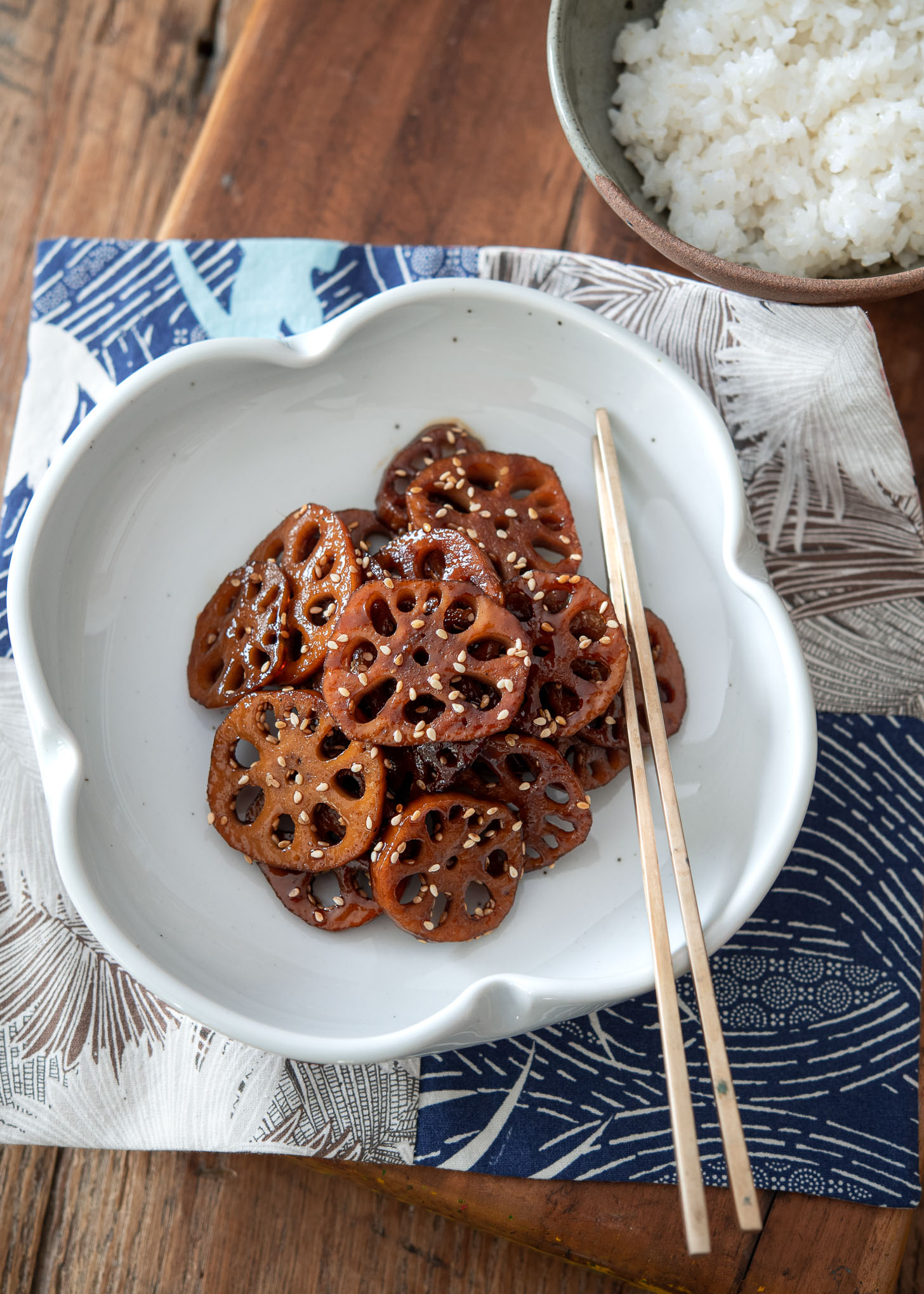
Believe it or not, the very first time I ever tried this Korean lotus root side dish was as a young child at my friend’s house where I was having some sort of playdate. It was so delicious to even a young, unrefined taster like I was then.
When I came back home, I asked my mother immediately why she never cooked lotus roots for us. Her excuse was simple—it’s too time consuming for a single side dish. I don’t blame her–she was raising 5 kids, after all. Making a variety of banchan (Korean side dishes) for every meal is a tough job for home cook who also had to work. She preferred side dishes that could come together quickly.
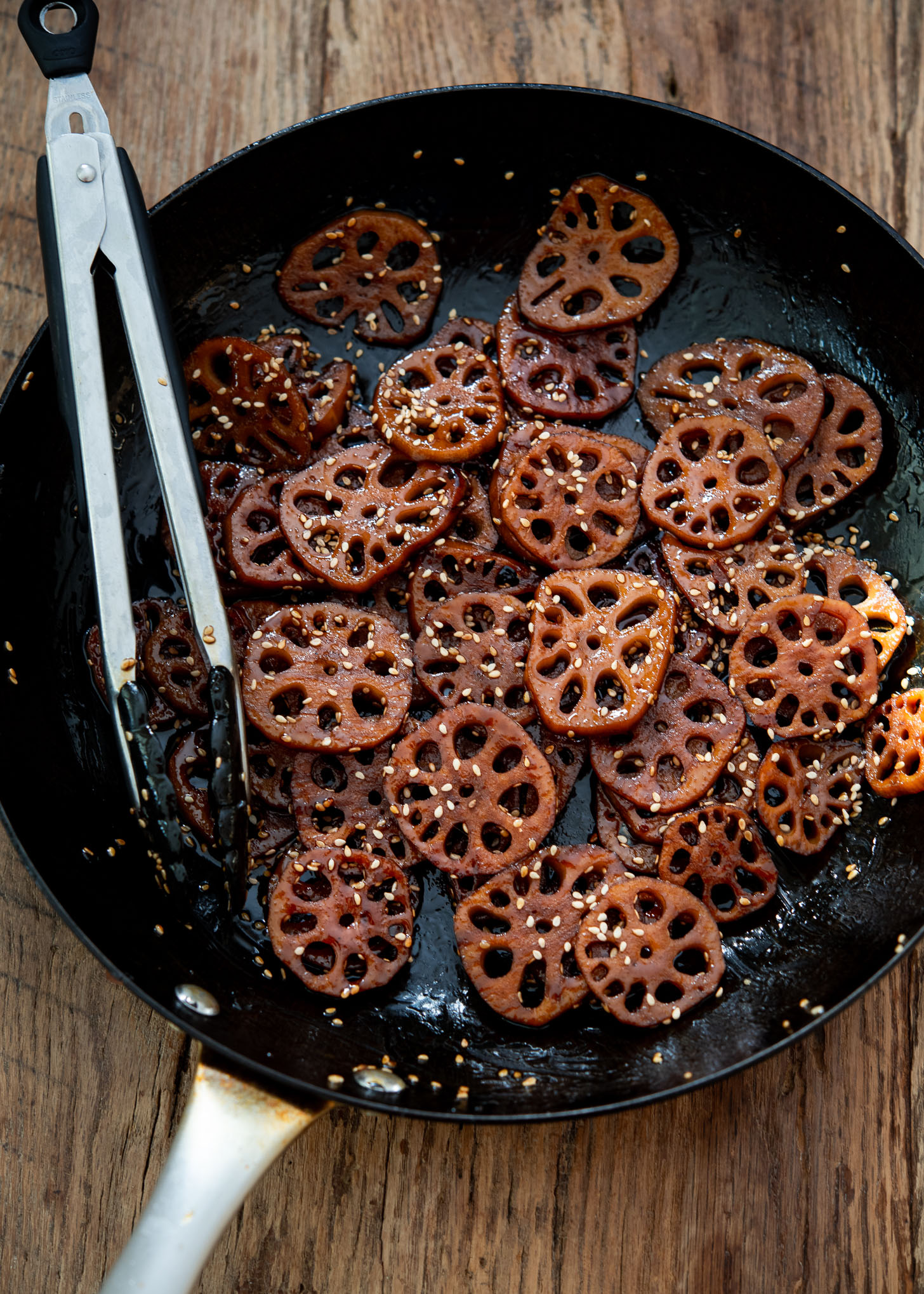
Although it requires a bit of time to prepare the lotus root properly, the recipe itself is very straightforward. It is totally worth the effort. You will get a delectable dish that is crispy and crunchy and chewy texture all at the same time—-incredibly delicious.
The shiny, glistening appearance makes them perhaps the prettiest side dish of all Korean banchan. That alone gives you a good reason to try it out, don’t you think?
So what is Korean braised lotus root?
Korean braised lotus root is a plant-based side dish braised with soy sauce, dark brown sugar, rice syrup, and sesame oil–perfect candidate for vegetarian/vegan menu.
The braising process allows the lotus root to absorb the salty and sweet flavor. It’s unique texture and shiny appearance makes it perfectly suited for special occasion meals in Korea.

What is lotus root?
The lotus root is a type of aquatic vegetation indigenous to Asia and widely used in Korean, Chinese, and Japanese cuisines. The plant itself has large, beautiful flowers and green ‘lily pad’ leaves, and the roots will have 3-4 segments like sausage links. The root has a yellow-brown skin and a creamy white flesh with a texture like a raw potato.
At first glance, lotus root looks like a huge, overripe banana and may not look appetizing. But once you slice into it, the distinctive lacy holes inside the root make it really stand out among other vegetables.
It’s a versatile ingredient whether you are stir-frying or deep-frying because it always keeps its crisp-tender texture. Its mild, fresh flavor makes it a great addition to salads, side dishes, and soups.
Fun fact: Do you know that lotus roots have male and female? It is easy to distinguish. Male lotus roots are long and slim, while female ones are short and round. People say that male lotus roots are crispier in texture, and female lotus roots tend to be chewier.
So if you have the option, the male lotus is better for making salad or deep-frying, while female ones are better for soups and braised dishes. But I found that the texture difference is very minimal unless you have very refined and sophisticated tastebuds. Either one is just fine for this recipe.
What does lotus root taste like?
Lotus root is mild and the taste resembles water chestnuts. The texture is crisp and crunchy like a jicama. Lotus roots are tough and naturally have a bitter and astringent taste, so you will need to blanch them before eating.
Once cut, lotus root starts to discolor, so soaking it in water with vinegar is recommended immediately after it is peeled or sliced. Blanching or boiling with vinegar will remove the bitter astringent flavor. The vinegar also makes the root slices a little whiter. I’ll walk you through all of this in the recipe below. Don’t worry, it’s easy!

Recipe ingredients
- lotus root: look for the ones that are firm when pressed. Avoid the ones with soft spots or bruises on the side.
- vinegar: will remove the bitter and astringent taste of lotus root.
- oil: it increases the shine in the glaze and helps it coat the root better
- soy sauce: to season and flavor
- dark brown sugar: adds sweetness and dark color
- sweet rice wine: savory addition
- sea kelp water (or plain water): adds a layer to the flavor (sea kelp water is easy to make; soak a piece of dried sea kelp in a bowl of water for a few minutes)
- rice syrup (or corn syrup): It adds sweetness and thickens the sauce. It also gives the sticky, shiny look to the glaze. Rice syrup holds the glaze better with less leakage than corn syrup does after cooking
- sesame oil: aromatic fragrance
- toasted sesame seeds: nutty fragrance and garnish
Recipe tips for a better result
- Stir gently: As you braise the lotus roots in the sauce, stir them gently so that you don’t break the lotus roots.
- Add rice syrup toward the end of cooking: I recommend adding the syrup in two stages toward the end of braising. It helps the glaze to form the right consistency and to reduce the moisture leakage after the dish is cooled down.
- Watch carefully: Once the liquid is evaporated and thickened, the sugar and the syrup in the glaze can burn quickly. Adjust the heat to avoid burning too fast.
How to make Korean braised lotus root
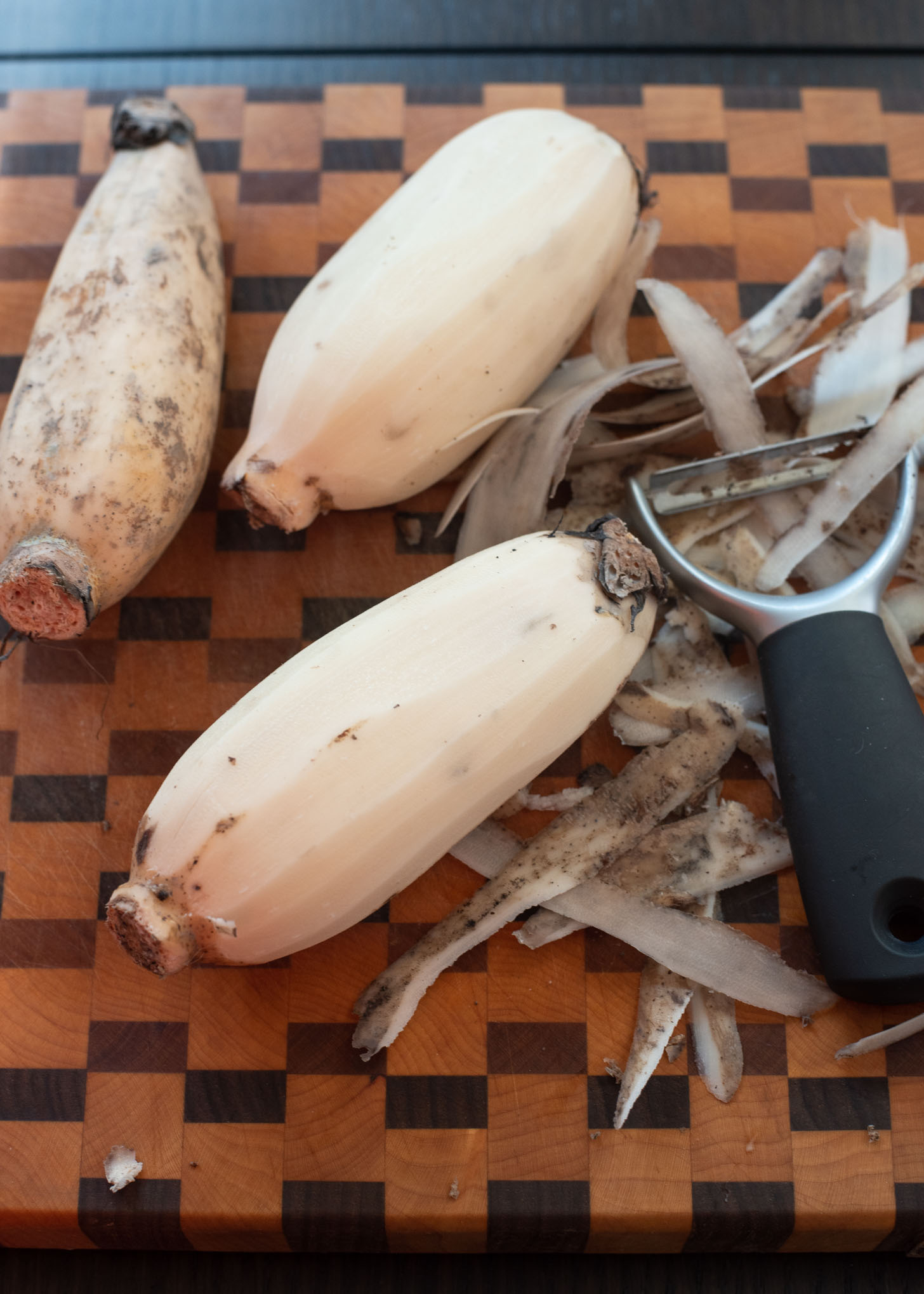
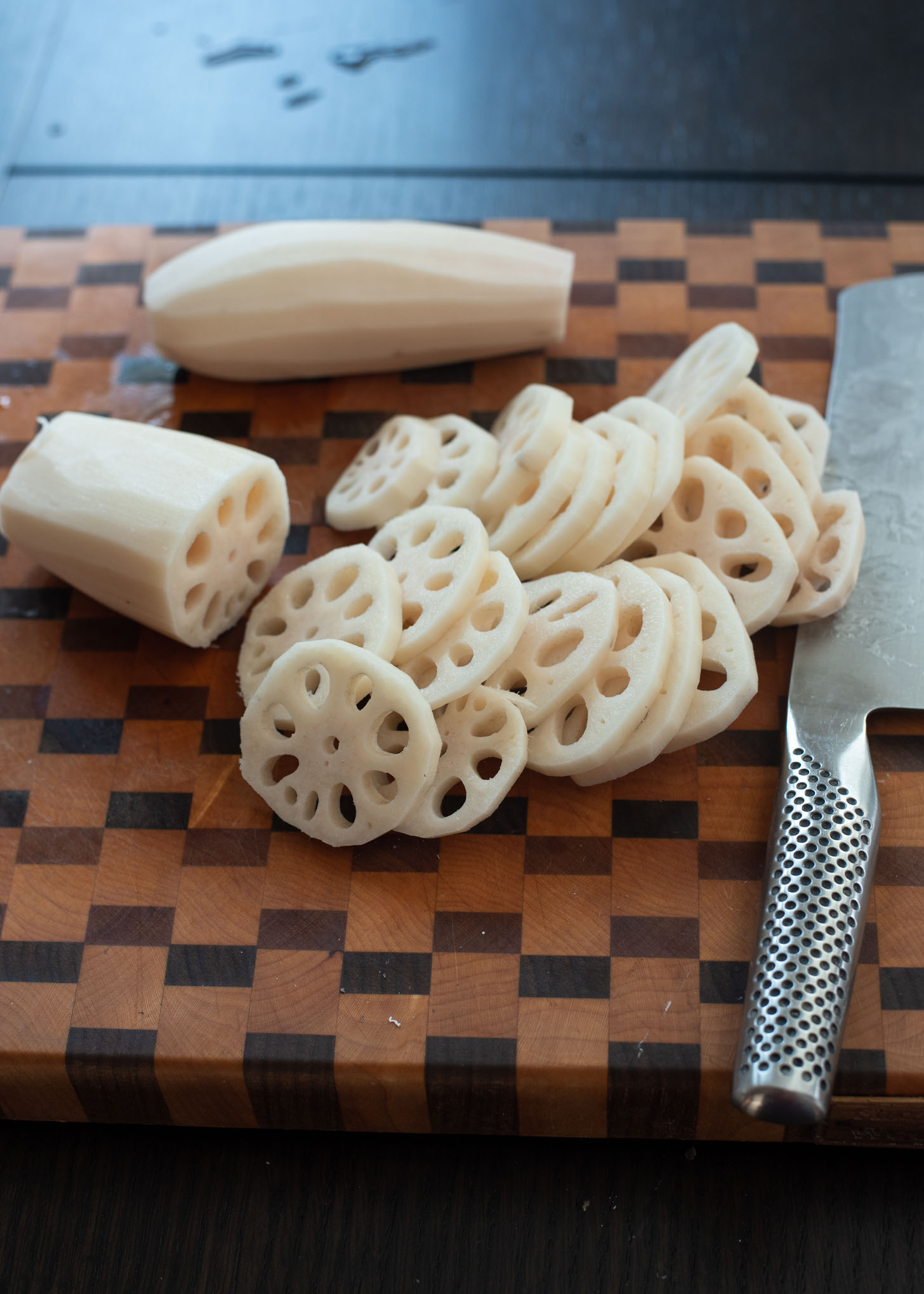
Step 1. Peel and slice lotus roots
Peel lotus root skin with a potato peeler and cut the tough ends off. Thinly slice the lotus root, about 1/4-inch thick.
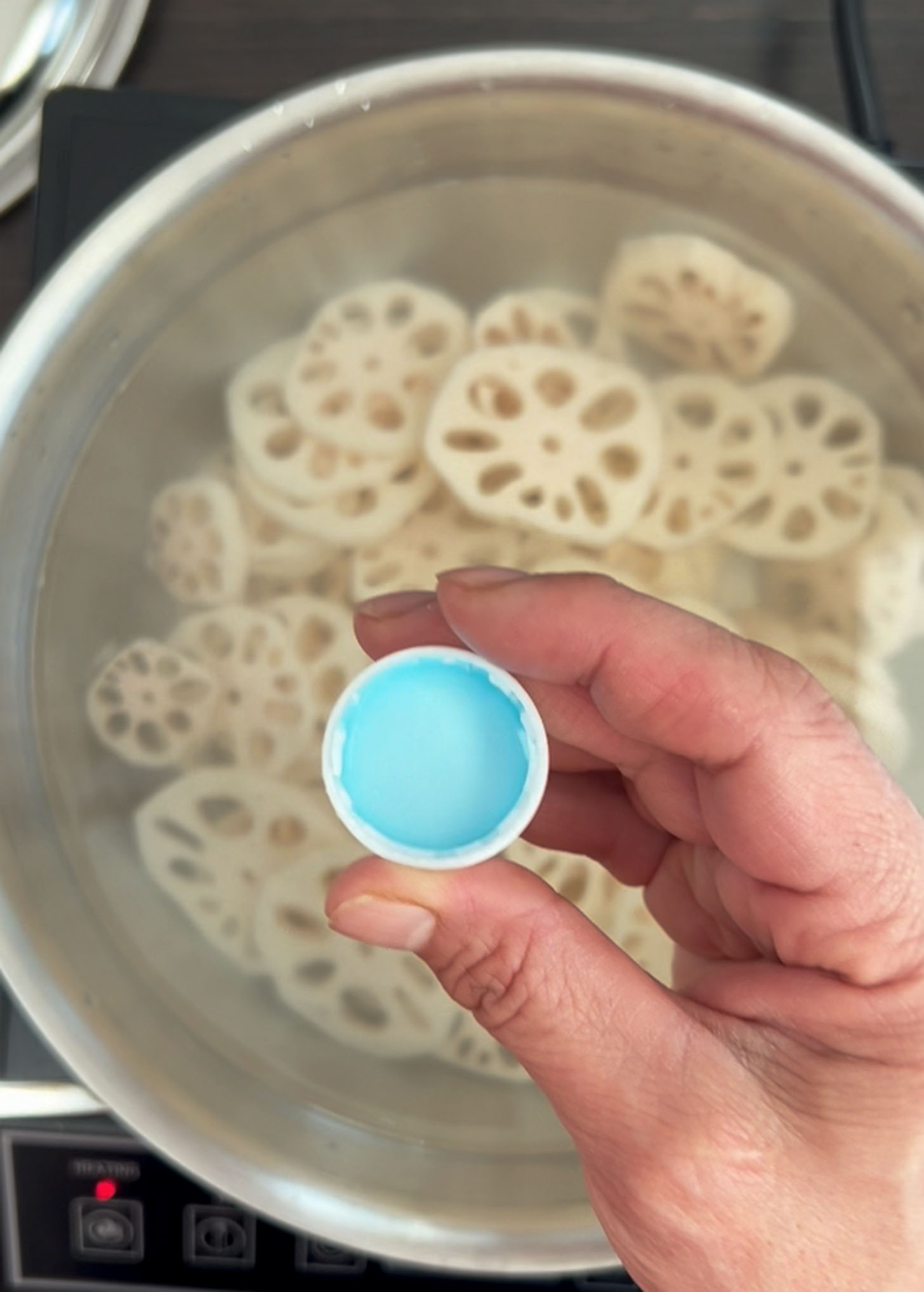

Step 2. Boil lotus roots
Add the lotus root slices to a pot, and add enough water to cover them. Add a tablespoon of vinegar. Bring it to a boil and cook, uncovered, for about 20 minutes (cooking time can be adjustable depending on the texture you desire). Drain, and rinse with cold water.
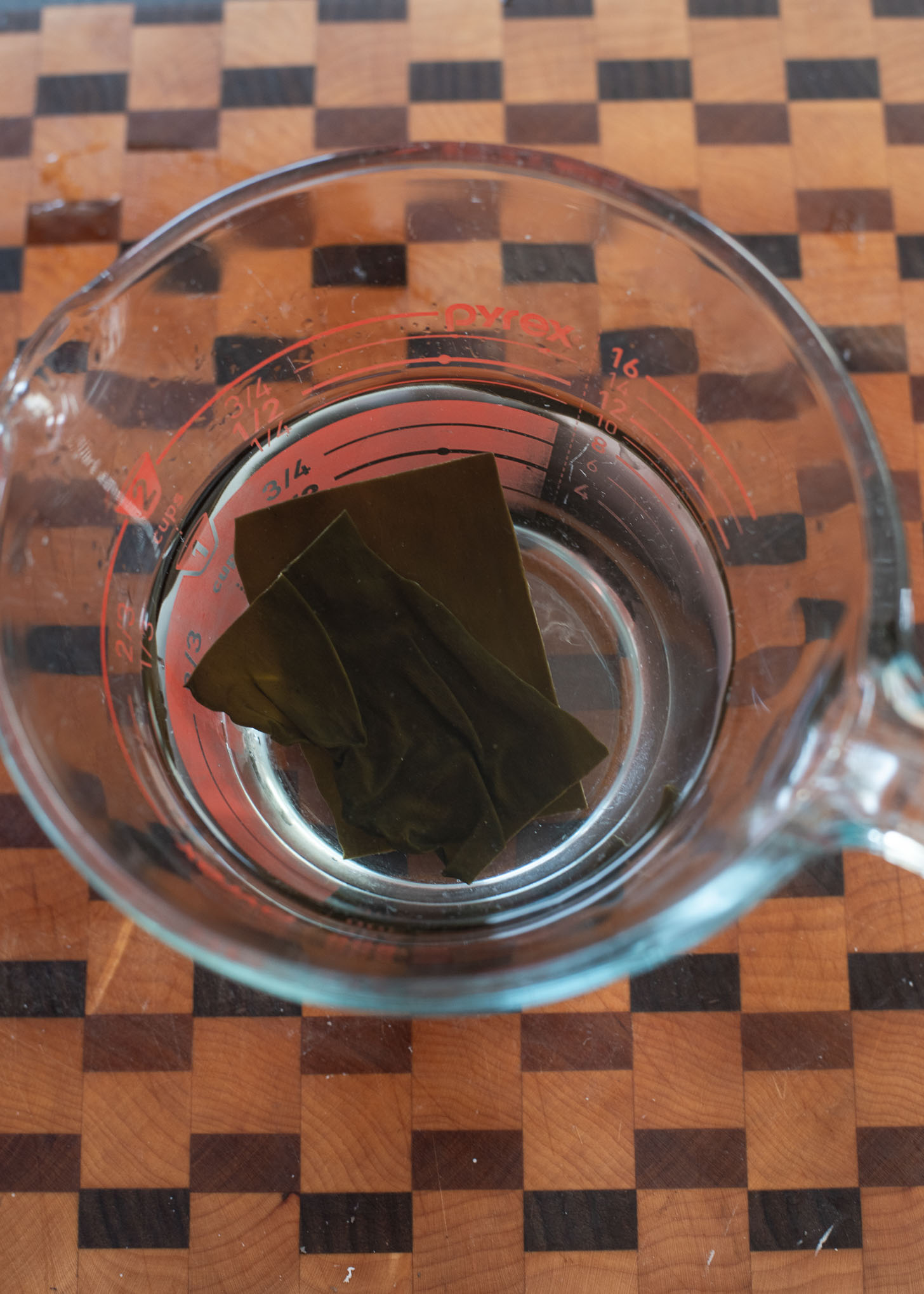
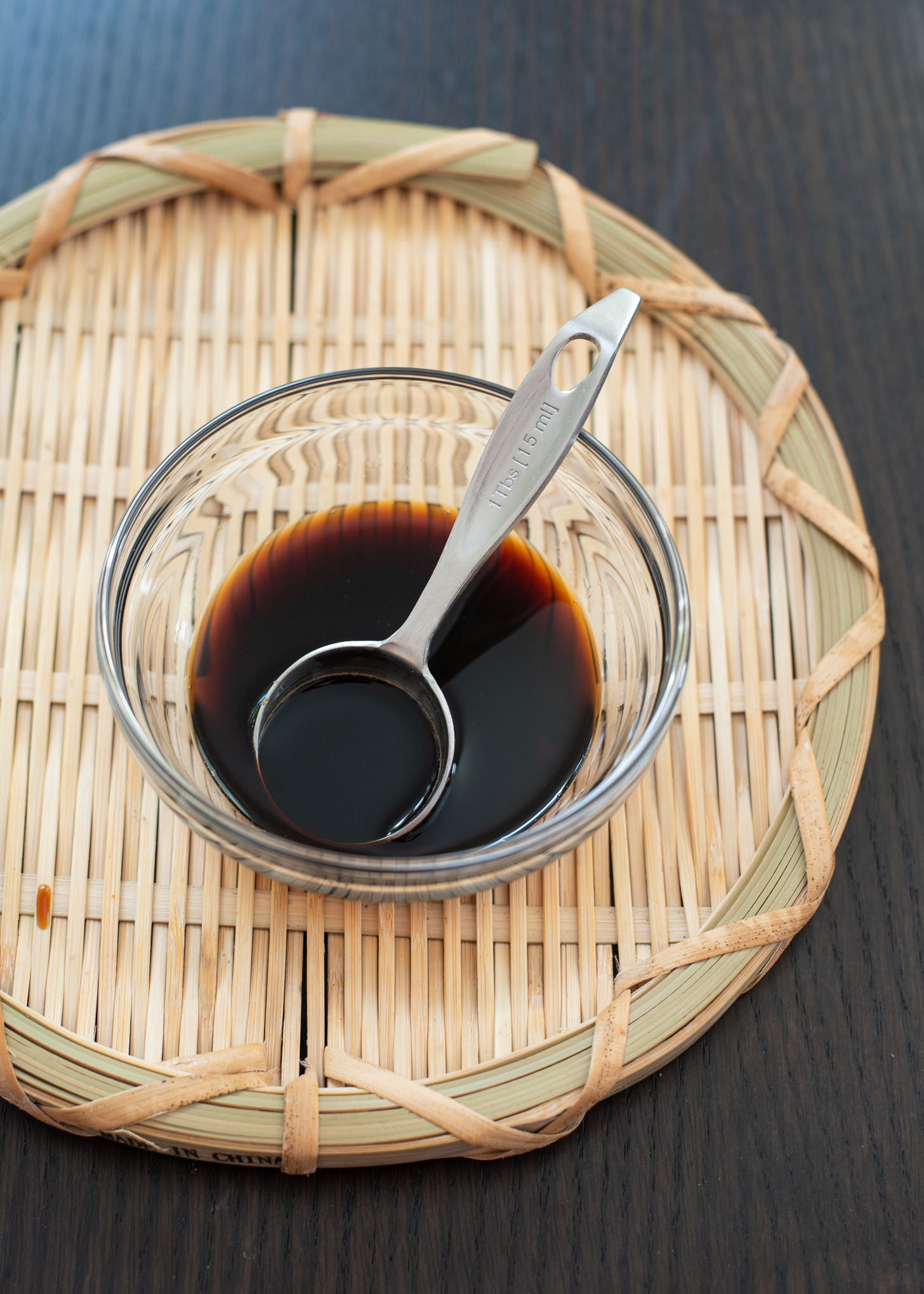
Step 3. Sea kelp water and braising sauce
Meanwhile combine the dried sea kelp in a bowl of cold water and set aside. In a small bowl, mix soy sauce, brown sugar, and rice wine; set aside.


Step 4. Cook with soy braising sauce
Heat 1 tablespoon of oil in a skillet over medium-low heat. Add the lotus roots and cook for 2-3 minutes coating each slice with oil evenly. Add the sauce mixture and sea kelp water (discarding the sea kelp) to the skillet, and bring it to boil over med-high heat. Let it cook until the liquid is almost evaporated, about 10-15 minutes.

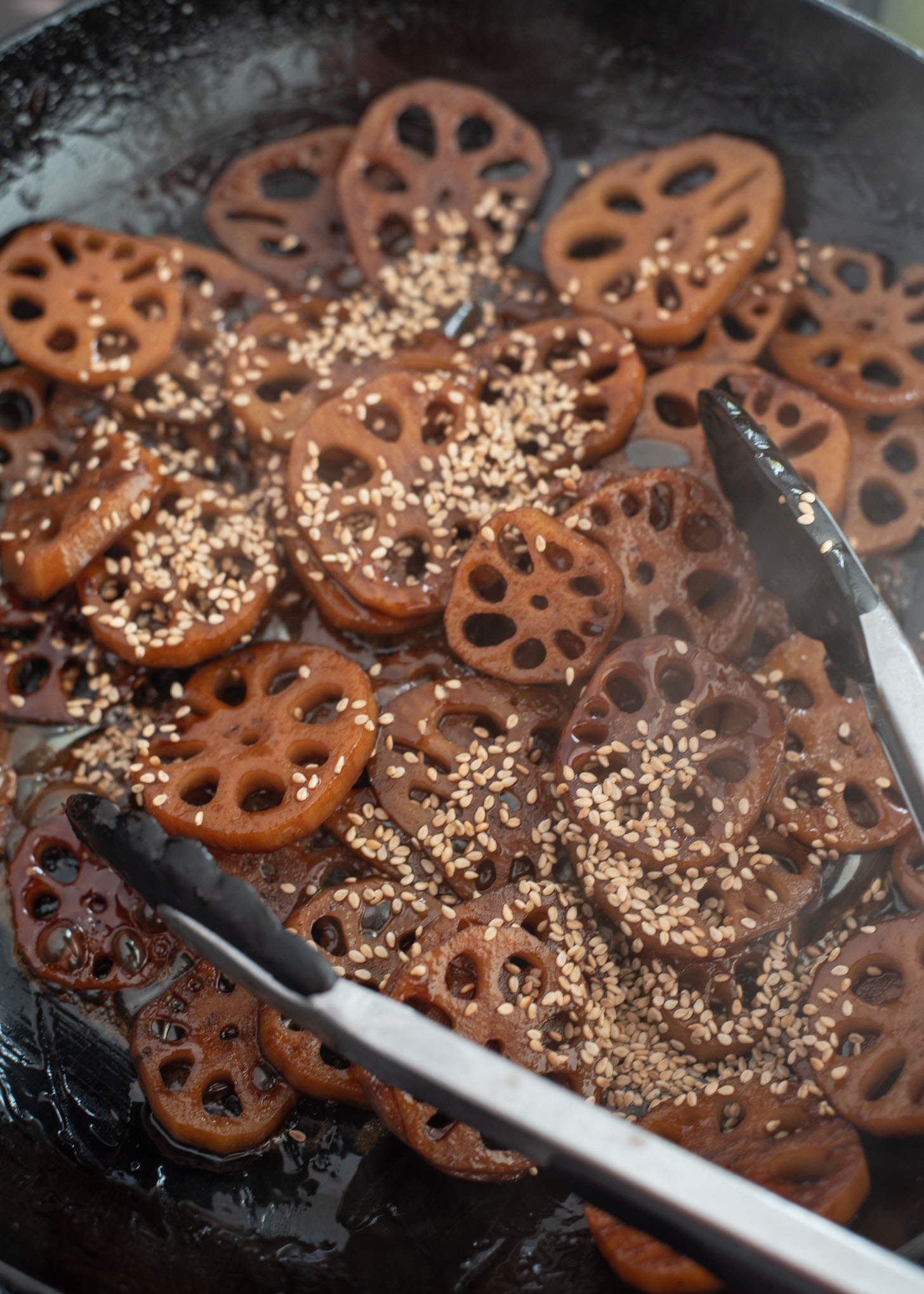
Step 5. Add rice syrup for the shiny glaze
Reduce the heat to medium. Add 1 1/2 tablespoon of rice syrup and cook again to thicken the glaze, stirring gently, until the moisture in the glaze is almost gone. Add the remaining rice syrup and continue to cook until the glaze becomes very sticky and the bottom of skillet is almost dry. Make sure to stir from the bottom so that you don’t burn the glaze. Adjust the heat if necessary.
Add sesame oil and sesame seeds, and toss well to coat. Serve with rice at room temperature or chilled.
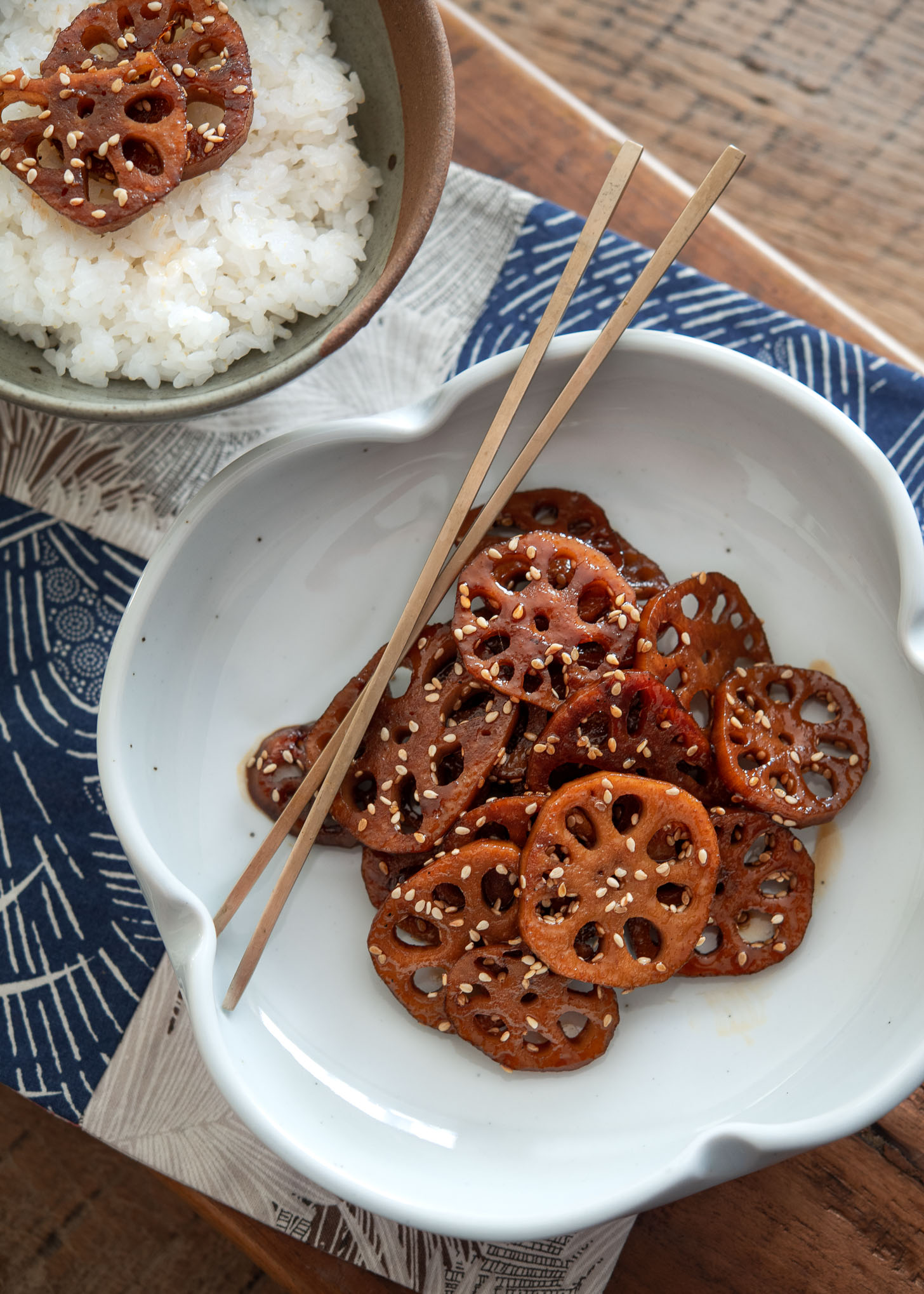
How to store leftover
Put the leftover in an airtight container and store in the refrigerator for up to 1 week. No need to reheat. Chilled lotus root is just as tasty. Freezing is not recommended.
More Korean side dishes
If you are a fan of Korean banchan, here are a few of easy recipes that you can quickly prepare at home.
- Quick Braised Tofu Recipe
- Korean Zucchini Banchan
- Korean Spinach Side Dish (Sigeumchi Namul)
- Korean Bean Sprout Side Dish (Kongnamul Muchim)
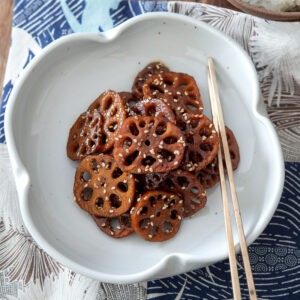
Korean Braised Lotus Root
Recipe Video
Ingredients
- 1 lb lotus root
- 1 cup cold water
- 1 tbsp white vinegar
- 1 piece dried sea kelp (dashima), use 2 pieces if small
- 3 tbsp soy sauce
- 1 tbsp dark brown sugar
- 2 tbsp sweet rice wine (mirim)
- 3 tbsp Korean rice syrup (jocheong), or corn syrup
- 1 tbsp oil
- 1 tbsp sesame oil
- 1 tbsp toasted sesame seeds
Instructions
- Peel lotus root skin with a potato peeler and cut the tough ends off. Thinly slice the lotus root, about 1/4-inch thick.
- Add the lotus root slices to a pot, and add enough water to cover them. Add a tablespoon of vinegar. Bring it to a boil and cook, uncovered, for about 20 minutes (cooking time can be adjustable depending on the texture you desire). Drain, and rinse with cold water.
- Meanwhile combine the dried sea kelp in a bowl of cold water and set aside. In a small bowl, mix soy sauce, brown sugar, and rice wine; set aside.
- Heat 1 tablespoon of oil in a skillet over medium-low heat. Add the lotus roots and cook for 2-3 minutes coating each slice with oil evenly. Add the sauce mixture and sea kelp water (discarding the sea kelp) to the skillet, and bring it to boil over med-high heat. Let it cook until the liquid is almost evaporated, about 10-15 minutes.
- Reduce the heat to medium. Add 1 1/2 tablespoon of rice syrup and cook again to thicken the glaze, stirring gently, until the moisture in the glaze is almost gone. Add the remaining rice syrup and continue to cook until the glaze becomes very sticky and the bottom of skillet is almost dry. Make sure to stir from the bottom so that you don’t burn the glaze. Adjust the heat if necessary. Add sesame oil and sesame seeds, and toss well to coat. Serve with rice at room temperature or chilled.


Can you use dried lotus root for this recipe?
If so how long do you blanch after rehydrating?
I suggest boiling for 20 min as same as recipe suggested. Thanks.
Is it possible to use dried lotus root for this recipe?
I have not tried with dried lotus root in this particular dish, so I can’t assure the result. I recommend trying with fresh ones, since the crispy texture of fresh lotus root is crucial in this recipe.